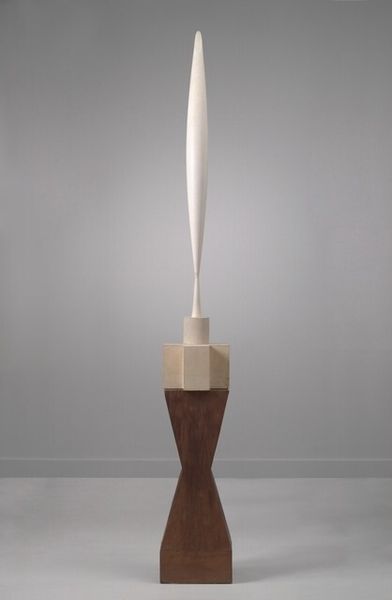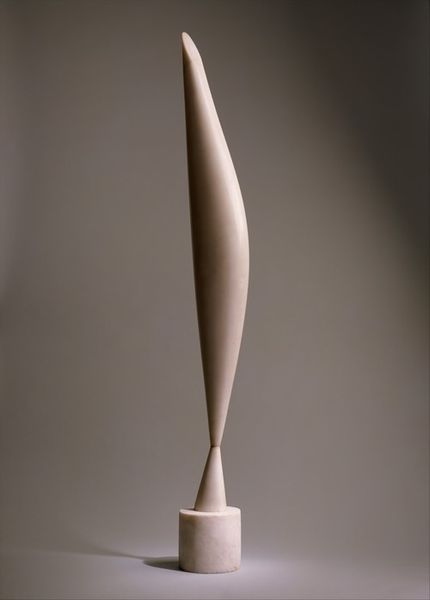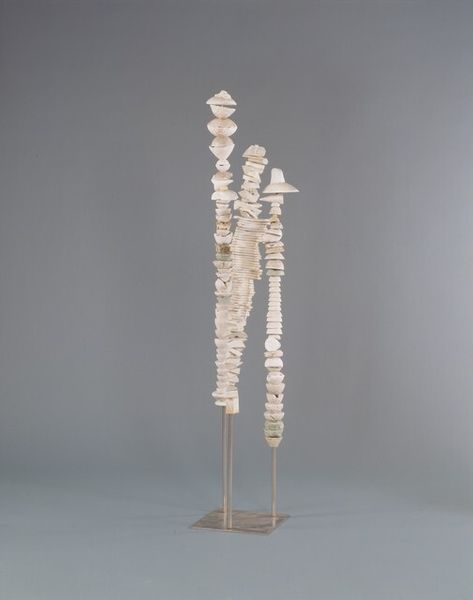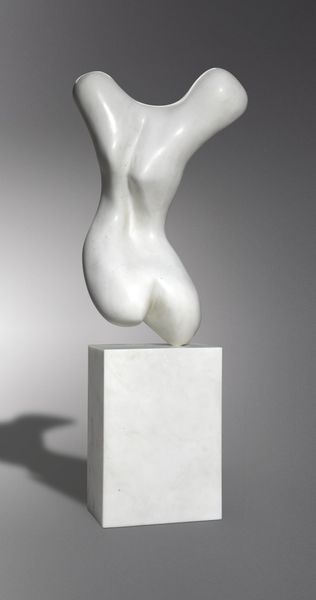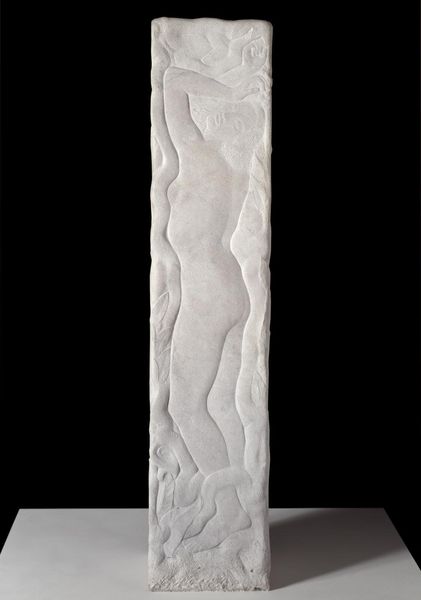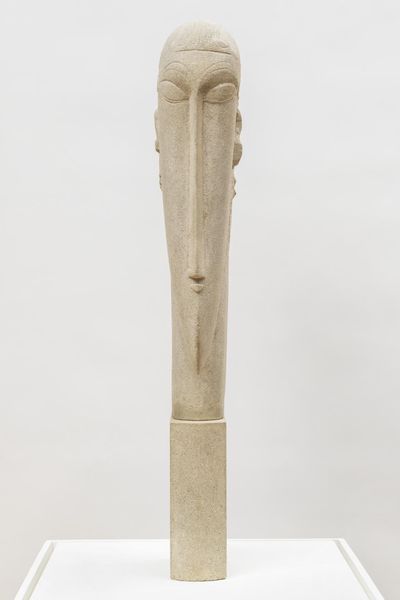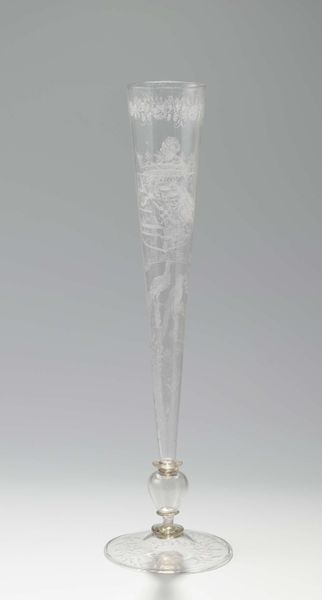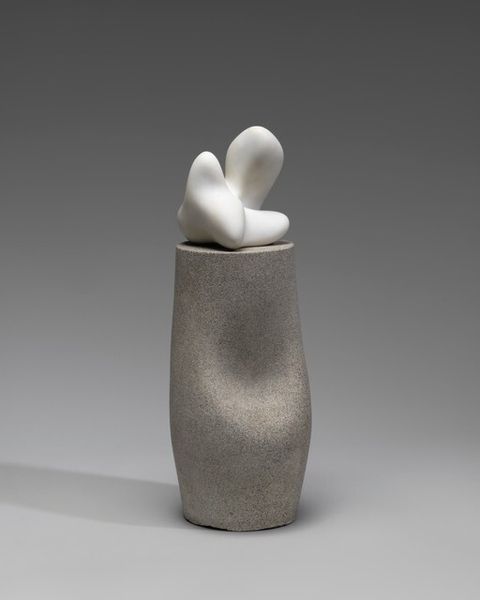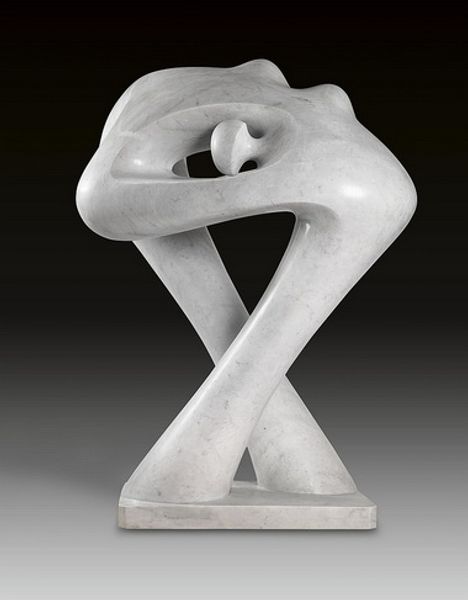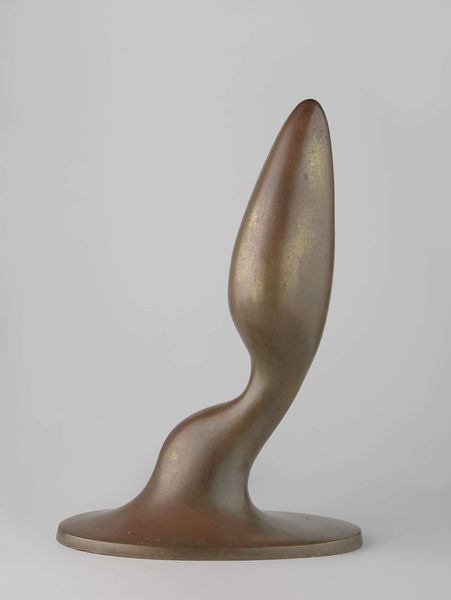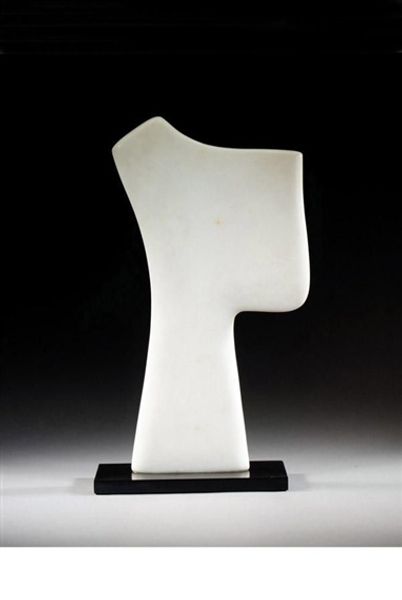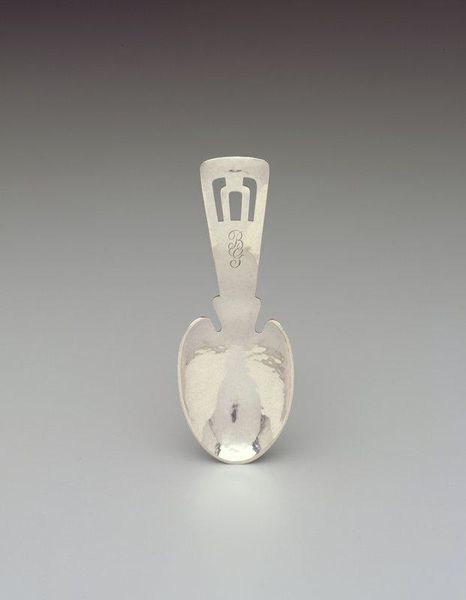
assemblage, sculpture, marble
#
abstract-expressionism
#
assemblage
#
form
#
sculpture
#
abstraction
#
marble
#
modernism
Dimensions: overall (height): 153.7 cm (60 1/2 in.)
Copyright: National Gallery of Art: CC0 1.0
Editor: This is Louise Bourgeois's "Spring," a marble sculpture from 1949. I'm really struck by how it manages to feel both organic and incredibly geometric at the same time. It reminds me of a stylized human form, maybe even a fertility symbol, but I'm curious to hear your thoughts. How do you interpret this work? Curator: Well, the title itself, "Spring," immediately suggests themes of renewal and growth. The stacked forms, particularly those rounded segments, do echo biological shapes – seeds, buds, breasts perhaps – laden with the potential for new life. But consider the whiteness of the marble; what associations does it trigger? Editor: Purity, maybe? Or even coldness, a kind of sterile quality. Curator: Exactly. The white carries symbolic weight, it refers to purity and rebirth but also to a kind of removal. We have this very organic form rendered in an inorganic, pale material. How does that influence your reading? Does it still feel like straightforward fertility, or something more complex? Bourgeois often explored anxieties and traumas tied to the female body. Could this be about the *potential* for life, juxtaposed with an awareness of vulnerability? The work elicits life's emergence into form and also the difficulty involved. Editor: That's a really interesting point. I hadn’t considered the element of anxiety and it’s exciting to unpack that now. I was so caught up in the organic shapes, the material itself presents another powerful layer to consider. Curator: Indeed. The symbolism is always multi-layered, and material plays such a powerful part in this. The artist seems to hint that the promise of Spring is always interwoven with the threat of change. Editor: Thank you, it gave me much food for thought on symbolism!
Comments
No comments
Be the first to comment and join the conversation on the ultimate creative platform.
